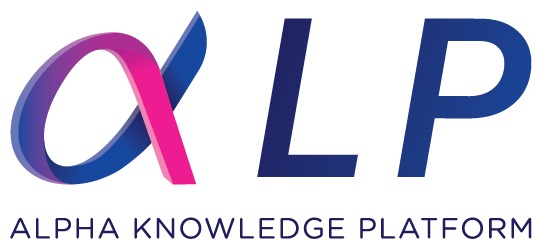TickerTape
Weekly Global Stablecoin & CBDC Update

This Week's Stories
Citi and Swift announced completion of a landmark trial demonstrating feasibility of settling payments between fiat and digital currencies using a Payment-versus-Payment (PvP) workflow. The trial leveraged existing Swift infrastructure augmented with institutional-grade blockchain connectors, orchestrators, and smart contracts to create a hybrid model bridging traditional financial systems and Distributed Ledger Technology (DLT) networks. The collaboration developed a holistic messaging standard capable of tracking end-to-end processes from trade initiation to settlement confirmation, incorporating an escrow mechanism to overcome irreversible blockchain transactions while ensuring synchronized PvP settlement. The solution utilized test USDC tokens from Circle on the Ethereum Sepolia testnet to simulate near-production environments, addressing gaps in current FX messaging standards (such as MT30X) that cannot instruct synchronized settlement between fiat and digital currencies.
Key Takeaways:
- Novel PvP approach successfully synchronizes settlement between incompatible systems (fiat accounts vs. blockchain wallets)
- Integration with Swift’s global network enables scalable institutional-grade digital asset transactions across existing financial infrastructure
- Holistic messaging standard addresses distinct data field requirements inherent in fiat-digital currency transactions
- Escrow mechanism eliminates settlement risk by ensuring atomic transaction finality for both parties
- Citi plans refinement in collaboration with broader financial community to establish operational standards
Why It Matters:
- Cross-border payment infrastructure: Bridges $1 trillion+ monthly stablecoin transaction volumes with traditional banking networks, expanding use cases beyond intra-crypto trading
- Risk mitigation: PvP settlement structure eliminates counterparty risk in fiat-stablecoin conversions, addressing major institutional adoption barrier
- Regulatory alignment: Swift integration with traditional messaging standards signals compatibility with existing compliance frameworks, facilitating regulatory approval
- Scalability pathway: Demonstrates feasibility of institutional-grade digital asset settlement without requiring parallel infrastructure, reducing implementation costs
- Market expansion: Enables recipients to redeem stablecoins for local fiat currency seamlessly, addressing current limitation where stablecoin recipients prefer immediate fiat conversion
The National Bank of Cambodia (NBC) and TenPay Global (Tencent’s international payments division, operating through WeChat Pay) signed a Memorandum of Understanding (MOU) to promote digital payment cooperation between Cambodia and China. The initiative aims to facilitate seamless cross-border payments for Cambodian tourists in China and Chinese visitors in Cambodia by enabling wallet interoperability and integration. TenPay Global emphasizes that “the path to global wallet interoperability lies at the intersection of technological advancement and sustained collaborations.” The MOU represents part of TenPay Global’s broader strategy to broaden integration of international wallets with Weixin Pay, creating connected payment ecosystems across markets. The initiative aims to enhance transaction convenience, security, and efficiency for consumers and merchants while unlocking new opportunities for cross-border commerce.
Key Takeaways:
- NBC-TenPay MOU creates formal framework for China-Cambodia digital payment interoperability and tourist payment facilitation
- Wallet integration enables users to utilize home wallets seamlessly across borders, reducing friction in cross-border transactions
- Leverages Tencent’s existing WeChat Pay ecosystem serving 900+ million users, enabling rapid deployment without new infrastructure
- Part of broader TenPay Global initiative to expand international wallet interoperability to additional jurisdictions and markets
- Focus on “technological advancement and sustained collaborations” signals multi-jurisdictional, phased expansion approach
Why It Matters:
- Regional commerce enablement: Direct payment interoperability removes friction for tourism and cross-border commerce between major Asian economies
- Technology transfer: Tencent’s fintech expertise supports NBC’s digital payment infrastructure modernization in rapidly developing market
- CBDC compatibility: Model potentially compatible with future e-CNY and CBDC integration as digital currencies expand across region
- Emerging market payment revolution: Demonstrates how digital payment leaders expand market access through partnerships rather than solely government-driven CBDC projects
- Precedent setting: Signals viability of private sector-led cross-border payment solutions in Southeast Asia ahead of regional CBDC coordination initiatives
According to Lookonchain data, Tether (USDT) and Circle (USDC) have collectively minted over $14 billion in new stablecoins since the October 10 market crash. The surge in stablecoin issuance includes recent individual mints of $750 million by Circle, indicating substantial liquidity deployment into the cryptocurrency market. This significant capital inflow historically acts as a leading indicator of fresh capital waiting to be deployed during market weakness. USDC dominance has climbed to approximately 2.33%, its highest level in nearly a year, reflecting a growing preference for stability amid market volatility. Analysts interpret this activity as institutions and traders accumulating dry powder for potential market rebounds.
Key Takeaways:
- Tether and Circle collectively minted $14 billion since October 10, with Circle alone minting $750 million recently
- Stablecoin supply surge historically precedes market rebounds, as traders position for accumulation during weakness
- USDC dominance rose to 2.33%, breaking above 50-day and 100-day moving averages, indicating momentum shift toward capital preservation
- Rising stablecoin balances on exchanges reflect widespread caution and wait-and-see positioning before capital reenters risk assets
- Significant liquidity buildup suggests institutional preparation for potential market recovery despite current bearish sentiment
Why It Matters:
- Stablecoin minting serves as a proxy for institutional capital accumulation strategy and market sentiment indicators
- Demonstrates ongoing confidence in stablecoin infrastructure as the preferred parking mechanism during market downturns
- Reflects strategic positioning by major institutions despite broader cryptocurrency market weakness and negative technical signals
- Historical correlation between stablecoin surges and market rebounds suggests potential catalyst for near-term price recovery
- Validates stablecoins’ role as the foundational liquidity layer supporting cryptocurrency market infrastructure
Grab and Singapore-based StraitsX have signed a memorandum of understanding to develop Web3-enabled payment infrastructure across Southeast Asia. The collaboration will integrate digital asset wallets and stablecoin-based settlements into the Grab app, enabling users to transact with stablecoins including XSGD and XUSD. GrabPay merchants across major Asian markets will accept cross-border payments from international consumers through Web3 wallets, with smart contract functionality supporting payment processing and clearing. The initiative addresses inefficiencies in Southeast Asia’s fragmented payment systems, where merchant credit card fees remain significantly higher than real-time payment alternatives. The partnership aims to deliver faster, cheaper, and more inclusive cross-border settlement with foreign exchange transparency, pending regulatory approval.
Key Takeaways:
- Grab and StraitsX signed an MOU to develop Web3-connected wallets and stablecoin-based payment networks for Southeast Asia
- Users may hold and transact with XSGD and XUSD stablecoins directly within the Grab app, subject to regulatory approval
- StraitsX will provide technical support for Web3 wallet development, enabling payment processing and settlement via smart contracts
- GrabPay merchants can accept stablecoin payments from both domestic and international consumers across participating Asian markets
- The integration bridges Web2 and Web3 payment systems while maintaining compliant custodial solutions and AML safeguards
Why It Matters:
- The partnership directly addresses Southeast Asia’s fragmented payment landscape by creating real-time, FX-transparent cross-border settlement infrastructure
- High merchant credit card fees in the region create a compelling use case for stablecoin alternatives, potentially reducing transaction costs significantly
- Grab’s scale combined with StraitsX’s established stablecoin infrastructure and regulatory expertise positions the initiative to achieve meaningful market adoption across multiple jurisdictions
- The collaboration demonstrates how Web3 technologies can enhance financial inclusion while maintaining regulatory compliance and consumer familiarity
- This partnership signals institutional confidence in stablecoin-native settlement as a viable solution for Southeast Asian cross-border payments, potentially influencing regional fintech strategy
The Office of the Comptroller of the Currency (OCC) issued Interpretive Letter 1186 on November 18, 2025, clarifying that federally chartered national banks may hold cryptocurrency assets on their balance sheets to pay blockchain network fees and test crypto platforms. The letter establishes that holding digital assets as principal for these purposes constitutes an activity “incidental to the business of banking.” The OCC analogizes this practice to historical banking functions like acquiring bank notes from other banks to facilitate customer transactions. Banks must maintain risk controls, keeping crypto holdings de minimis relative to their capital, and can hold assets for testing internal or third-party crypto platforms. This guidance significantly streamlines regulatory compliance for banks entering the digital assets space.
Key Takeaways:
- Banks may now hold crypto assets on balance sheets specifically to pay blockchain transaction fees without violating banking regulations
- Crypto holdings must remain minimal relative to bank capital and include robust operational, cybersecurity, and legal risk controls
- Banks can hold crypto assets for testing purposes, enabling them to validate crypto platforms internally rather than relying on external parties
- The guidance positions blockchain node operation and crypto participation as traditional banking activities, modernizing interpretations under existing regulations
- This ruling reflects the OCC’s pro-crypto stance under Comptroller Jonathan Gould and signals regulatory support for bank participation in digital assets
Why It Matters:
- Regulatory Clarity: The letter removes legal ambiguity around bank participation in blockchain infrastructure, enabling faster adoption across the banking sector
- Operational Efficiency: Banks can now manage necessary blockchain operations directly, reducing dependency on third-party service providers and associated costs
- Infrastructure Development: Clearer rules facilitate bank participation in building robust digital asset infrastructure, supporting broader CBDC and stablecoin ecosystems
- Competitive Positioning: The guidance allows U.S. banks to compete internationally in digital finance without regulatory barriers, supporting global financial leadership
- Market Acceleration: This decision is expected to accelerate bank adoption of crypto services, potentially expanding the institutional foundation for digital currencies
Trust Stamp, a Nasdaq-listed digital identity company, announced on November 17, 2025, that it has requested regulatory relief from the U.S. SEC and European MiCAR regulators for its StableKey Wallet, a biometrically validated, quantum-secure “Wallet of Wallets” designed for stablecoin issuers and users. The company has raised in excess of $10 million in new capital to support development. The StableKey Wallet combines live biometric authentication with non-custodial wallet functions, offering multi-cryptocurrency holdings, cross-device access, joint control, inheritance planning, and alternative recovery methods. The wallet is scheduled for release in January 2026 and represents a comprehensive security solution bridging the convenience of software wallets with the security of hardware-based cold storage.
Key Takeaways:
- Trust Stamp has secured over $10 million in new capital, demonstrating strong investor confidence in advanced stablecoin infrastructure solutions
- StableKey Wallet combines biometric security with quantum-resistant encryption, addressing evolving cybersecurity threats in digital asset custody
- The wallet features multi-functionality including non-custodial custody, inheritance planning, and “Wallet of Wallets” capabilities for institutional users
- Regulatory no-action requests to SEC and MiCAR reflect the company’s proactive compliance approach in a rapidly evolving regulatory environment
- January 2026 launch timeline aligns with anticipated growth in the global stablecoin market, projected to exceed $300 billion currently
Why It Matters:
- Custody Innovation: The StableKey Wallet addresses critical gaps in stablecoin infrastructure by combining institutional-grade security with user-friendly features
- Regulatory Pathway: No-action requests to both U.S. and EU regulators demonstrate the company’s commitment to multi-jurisdictional compliance and signal potential harmonization between SEC and MiCAR frameworks
- Market Timing: Launch coincides with Treasury Secretary Scott Bessent’s projection that the stablecoin market could grow tenfold by decade’s end, creating significant infrastructure demand
- Security Standards: Quantum-secure architecture protects against future cryptographic threats, establishing security benchmarks for the industry
- Institutional Adoption: Non-custodial features with joint control and inheritance planning address institutional and high-net-worth individual demand for sophisticated asset management
The International Monetary Fund released a comprehensive analysis examining how retail central bank digital currencies (rCBDCs) interact with global anti-money laundering and counterterrorism financing standards. The November 2025 Fintech Note identifies critical design challenges that policymakers must address before implementing rCBDCs, including questions around user anonymity, transaction monitoring, and compliance enforcement. The report highlights that rCBDC features, such as accessibility, programmability, and offline transaction capabilities, create novel compliance complexities absent in traditional banking systems. Current design frameworks present tension between financial inclusion and regulatory oversight. The IMF provides guidance on good practices for applying AML/CFT measures in rCBDC contexts, emphasizing that robust design and compliance mechanisms must be established during the planning phase rather than retrofitted after launch.
Key Takeaways:
- Design-Privacy Tension: rCBDC accessibility and programmability features may compromise transaction monitoring capabilities essential for AML/CFT compliance
- Anonymity Challenges: Enhanced user anonymity in some rCBDC designs complicates customer due diligence (CDD) and transaction tracing required by international standards
- Novel Compliance Gaps: Limited real-world rCBDC practice means current designs raise unanswered questions about effective implementation of international AML/CFT standards
- Pre-Launch Planning Critical: Authorities must embed compliance measures during rCBDC design phase, not after deployment
- Architectural Implications: Both one-tier (direct central bank) and two-tier (intermediated) CBDC models pose distinct regulatory challenges requiring tailored AML/CFT approaches
Why It Matters:
- Financial Crime Prevention: As central banks move toward rCBDC adoption, ensuring robust AML/CFT integration is essential to prevent money laundering and terrorism financing exploitation
- Policy Guidance Needed: The IMF report provides policymakers with critical considerations and good practices, filling a gap given limited operational rCBDC experience globally
- Regulatory Harmonization: International standards must evolve to address rCBDC-specific challenges while maintaining consistent compliance across jurisdictions
- Balance Innovation with Security: The analysis underscores the need to design digital currencies that enable financial inclusion without creating vulnerabilities for illicit actors
- Precedent Setting: Early rCBDC implementations will establish compliance templates influencing how subsequent jurisdictions structure their own digital currencies
KRWQ, the first fiat-backed and multichain stablecoin pegged 1:1 to the South Korean won, officially surpassed 1 billion won in total trading volume on November 19, 2025, less than two weeks after launch. Developed by IQ in partnership with Frax, KRWQ combines IQ’s established Korean market presence with Frax’s proven stablecoin infrastructure. The milestone coincided with the activation of AERO emissions on Aerodrome, expanding incentives for the KRWQ-USDC pool on Base and supporting deeper liquidity. KRWQ uses LayerZero’s OFT (Omnichain Fungible Token) standard and Stargate bridge, enabling seamless cross-blockchain movement with unified liquidity and zero-slippage transfers. Minting and redemption are limited to eligible KYC’d counterparties including exchanges, market makers, and institutional partners, with the stablecoin intended for global DeFi markets rather than Korean residents.
Key Takeaways:
- KRWQ surpasses ₩1 billion trading volume less than two weeks after launch on November 19
- Partnership combines IQ’s Korean market expertise with Frax’s scalable stablecoin infrastructure
- LayerZero OFT standard enables multichain interoperability with zero-slippage cross-chain transfers
- Limited to institutional counterparties, not marketed to Korean residents despite KRW peg
Why It Matters:
- Demonstrates growing demand for regional currency stablecoins beyond USD-pegged alternatives
- Validates Asia Stablecoin Alliance’s strategy promoting local currency digital assets
- Positions Korean won as viable DeFi settlement currency alongside major global currencies
- Could influence other Asian economies to support domestic currency stablecoin development
Opera’s MiniPay stablecoin wallet launched a “Pay like a local” feature on November 18, 2025, allowing over 10 million users in Argentina and Brazil to spend stablecoins directly at shops and services using local payment systems. Announced during Ethereum Devconnect conference in Buenos Aires, the integration connects USDT balances to PIX (Brazil’s instant payment system used by 76% of the population) and Mercado Pago (reaching 70% of Argentine market). Infrastructure provider Noah handles instant conversion behind the scenes, so merchants receive local currency—Argentine pesos or Brazilian reais—without touching crypto. Users scan local QR codes and pay from MiniPay wallet, with the system converting stablecoins to fiat automatically. MiniPay plans to expand to other markets, partnering with El Dorado, AlfredPay, and Paytrie to provide on- and off-ramps across Latin America and Canada.
Key Takeaways:
- MiniPay’s “Pay like a local” feature connects USDT to PIX and Mercado Pago for 10+ million users
- Integration enables stablecoin spending at physical merchants with automatic fiat conversion
- PIX processes more payments than cards in Brazil, reaching 76% of population
- Expansion planned for additional Latin American markets and Canada through payment provider partnerships
Why It Matters:
- Demonstrates practical stablecoin utility shift from speculation to real-world daily spending
- Validates importance of integrating with dominant local payment rails for mainstream adoption
- Could accelerate Latin American stablecoin usage by leveraging familiar payment interfaces
- Positions stablecoins as viable solution for countries with currency volatility or payment inefficiencies
The Canadian government tabled its Budget Implementation Act on November 18, 2025, establishing a new federal Stablecoin Act modeled on the U.S. GENIUS Act but with notable differences. The legislation establishes a federal regulatory regime under the Bank of Canada supervising stablecoin issuers available to persons in Canada. Unlike the U.S. approach which prohibits unlicensed issuance, Canada requires registration rather than outright prohibition. The bill defines stablecoins as digital assets referencing a single fiat currency and requires issuers to maintain reserve assets in equivalent fiat currency or high-quality liquid assets with redemption rights. Issuers must submit detailed applications covering governance, technical specifications, anti-money laundering compliance, and financial disclosures. Requirements include monthly Bank of Canada reporting, policies on governance, risk management, data security, and recovery/resolution procedures. The Bank of Canada receives enforcement powers and authority to issue administrative monetary penalties, with enforcement provisions comprising approximately half the bill.
Key Takeaways:
- Canadian Stablecoin Act introduced November 18 establishing Bank of Canada supervision regime
- Requires registration rather than prohibition; defines stablecoins as single fiat-currency digital assets
- Mandatory reserve backing in equivalent fiat or high-quality liquid assets with redemption rights
- Monthly reporting, governance policies, and comprehensive enforcement framework aligned with financial stability concerns
Why It Matters:
- Positions Canada with comprehensive regulatory framework comparable to U.S. GENIUS Act
- Registration approach rather than prohibition encourages domestic stablecoin issuance versus prohibition-driven migration
- Validates international convergence on stablecoin regulatory principles centered on reserve backing and redemption
- Could accelerate CAD-pegged stablecoin development through clear regulatory pathway
The IMF hosted a regional seminar on November 21, 2025, in Tokyo featuring presentations on the IMF’s CBDC Virtual Handbook and cross-border payment innovations, organized in cooperation with Japan’s Ministry of Finance and Bank of Japan. Tommaso Mancini-Griffoli, Assistant Director of the IMF’s Monetary Capital Markets Department, presented six new CBDC Handbook chapters addressing financial stability, payments competition, financial integrity, legal considerations, tokenized reserves, and payment resilience in fragile and conflict-affected states. Tobias Adrian, IMF Financial Counsellor, discussed rapid technological innovation in stablecoins and tokenization, emphasizing potential for cross-border payment efficiency while highlighting new regulatory and financial stability challenges. Discussants included Mamerto Tangonan, Deputy Governor of the Philippines’ Bangko Sentral, and central bank governors from Papua New Guinea and Fiji addressing regional payment system challenges particular to Pacific Islands Countries.
Key Takeaways:
- IMF publishes six new CBDC Handbook chapters addressing financial stability, legal frameworks, and tokenized reserves
- Seminar focuses on stablecoin developments, tokenization innovations, and cross-border payment improvements
- Regional emphasis on Pacific Islands Countries facing unique payment system challenges
- Technical assistance ramping up for emerging and developing country payment modernization
Why It Matters:
- Demonstrates IMF’s systematic approach to CBDC guidance through updated Virtual Handbook
- Highlights growing focus on tokenized reserves as distinct CBDC design consideration
- Addresses Asia-Pacific specific payment challenges including remote island economies
- Validates regional coordination on digital money policy development
Global banking regulators are fundamentally rethinking stablecoin regulation as the Bank of England defends its proposed framework amid evolving market dynamics. Basel Committee chair Erik Thedéen stated that stablecoins require “a different approach” to capital requirements, moving away from the blanket 1,250% risk weight applied to permissionless ledger tokens. The BoE launched a consultation process (closing February 10, 2026) proposing a dual-tier regulatory model with ownership caps—£20,000 for individuals and £10 million for businesses—alongside a controversial 40% unremunerated reserve requirement at the central bank. Critics argue the unremunerated reserve requirement could eliminate issuer profitability and deter UK licensing, while BoE Deputy Governor Sarah Breeden cited SVB’s collapse and Circle’s crisis to justify stringent guardrails. Meanwhile, Circle announced three major infrastructure initiatives: Arc Layer-1 blockchain with StableFX institutional FX engine, Circle xReserve for interoperability, and eight new non-USD stablecoins joining its partner ecosystem.
Key Takeaways:
- The BoE’s proposed 40% unremunerated reserve requirement, while aimed at protecting depositors, may prove prohibitively expensive for stablecoin issuers and discourage UK market participation.
- Basel’s shift from uniform 1,250% risk weighting toward differentiated stablecoin treatment reflects regulatory acceptance that reserve-backed stablecoins present fundamentally different risk profiles than volatile tokens.
- Circle’s concurrent infrastructure announcements (Arc, xReserve, regional stablecoins) demonstrate stablecoin ecosystem expansion is occurring despite regulatory uncertainty and ongoing market volatility.
- The BoE’s dual-tier approach creates regulatory clarity for some use cases while potentially fragmenting the market and pushing growth to less regulated jurisdictions.
- Regulatory divergence between UK, EU (preferring January 2026 Basel rules with post-implementation review), and U.S. frameworks continues to complicate cross-border stablecoin operations.
Why It Matters:
- The BoE’s defense of its framework signals commitment to innovation but the unremunerated reserve requirement threatens to make UK licensing commercially unviable for USDC and USDT issuers.
- Basel’s recognition that stablecoins warrant different treatment than volatile tokens validates two years of industry advocacy for risk-calibrated regulation and represents a significant policy pivot.
- Circle’s infrastructure buildout during market volatility suggests institutional appetite for stablecoin infrastructure remains strong despite near-term regulatory uncertainty and Bitcoin price declines.
- The fundamental tension between financial stability objectives (high reserve requirements, ownership caps) and market efficiency (fast settlement, global reach) remains unresolved across jurisdictions.
- Digital euro launch timelines continue to slip (now targeted for 2029 at earliest) while commercial stablecoins expand operationally, reinforcing first-mover advantages for private issuers.
South Africa’s stablecoin market has expanded with the launch of ZAR Supercoin (ZARSC), a rand-backed digital currency issued by Super Money (subsidiary of Super Group) and now trading on the Luno exchange. ZARSC represents the third known rand-pegged stablecoin, joining ZARC and ZARP, reflecting growing institutional interest in local currency tokenization across African markets. Each ZARSC token is backed by rand reserves held at Absa and monitored through Chainalysis Sentinel for compliance. The platform plans a digital wallet launch in March 2026 with fintech integrations and P2P transfer capabilities. Early use cases include discounted payments on Betway sports betting platform, with broader exchange listings and Solana deployment planned. The expansion mirrors continent-wide stablecoin development, with Nigeria’s cNGN exceeding 650 million tokens in circulation across multiple blockchains.
Key Takeaways:
- The emergence of three competing rand-backed stablecoins indicates strong demand for local currency digital assets as alternatives to USD-pegged tokens in high-inflation jurisdictions.
- South Africa’s regulatory framework (FSCA licensing with Chainalysis monitoring) demonstrates institutional confidence in stablecoin infrastructure despite previous central bank concerns about USD stablecoin adoption.
- Cross-continent proliferation of local currency stablecoins in Nigeria, South Africa, and Kenya signals a fundamental shift away from dollar-denominated crypto dominance toward monetary sovereignty preservation.
- Integration with mainstream consumer platforms (Betway sports betting) demonstrates stablecoin transition from exchange-only trading to embedded payment infrastructure for real-world use cases.
- Solana’s emergence as primary blockchain for African stablecoins reflects adoption of lower-cost, higher-throughput networks better suited to African payment corridors than Ethereum.
Why It Matters:
- Local stablecoin proliferation directly challenges the USD-stablecoin monoculture previously dominant in emerging markets and creates hedge mechanisms against currency devaluation.
- The South African Reserve Bank’s earlier warnings about USD stablecoin risks have translated into proactive development of domestic alternatives rather than restrictive regulation, indicating pragmatic policy evolution.
- Regional stablecoin ecosystems create competitive pressure on traditional remittance corridors and cross-border payment infrastructure, potentially disrupting established fintech business models.
- Institutional backing from betting platforms and digital money providers signals mainstream acceptance and use-case expansion beyond pure financial services into consumer applications.
- African stablecoin development positions the continent as potential innovation hub for emerging market payment infrastructure, potentially attracting fintech capital and talent.
A major stablecoin infrastructure provider highlighted the accelerating institutional adoption of stablecoins following the passage of the GENIUS Act in July 2025, characterizing stablecoin integration as now essential rather than optional for global financial firms. The commentary describes rapid customer adoption across diverse sectors, with a mid-sized remittance platform reducing transfer times from 48 hours to under 60 seconds through USDC integration while reducing float requirements by 40 percent. Cross-border payment volume exceeding $400 million is reportedly migrating to stablecoin rails, with infrastructure providers fielding multiple daily inquiries from enterprise customers. The analysis argues that stablecoin integration requires organizational reframing—adopting stablecoins as underlying settlement infrastructure rather than a product pivot or crypto company transition. Leading practices include starting with focused use cases (intercompany settlement, treasury operations), implementing API-first orchestration layers, conducting pilot programs, and scaling gradually across chains and stablecoins.
Key Takeaways:
- Enterprise stablecoin adoption has accelerated significantly post-GENIUS Act, with remittance platforms achieving 99.6% reduction in transfer times and 40% improvement in working capital efficiency.
- Institutional adoption patterns show stablecoins functioning as operational infrastructure modernization rather than speculative assets or strategic pivots, consistent with DeFi-TradFi bridge narratives.
- Leading implementation strategy emphasizes API-first orchestration layers and compliance-embedded infrastructure over direct chain integrations, indicating maturation of institutional stablecoin tooling.
- Treasury teams are prioritizing stablecoins for liquidity management and working capital optimization, suggesting corporate finance rather than payment is the initial enterprise adoption vector.
- Organizational readiness requires cross-functional alignment (legal, compliance, treasury, operations) and phased approach rather than wholesale business model transformation.
Why It Matters:
- The framing of stablecoins as “table stakes” rather than optional innovation signals that competitive pressures now favor firms integrating stablecoin rails, creating first-mover advantages in payment modernization.
- Concrete efficiency metrics (99.6% time reduction, 40% capital efficiency gains) provide quantifiable ROI justification that has historically been lacking in crypto infrastructure narratives.
- Enterprise adoption driven by treasury optimization and working capital management suggests stablecoin utility is rooted in fundamental financial operations improvements rather than speculative technology cycles.
- The emphasis on API-first infrastructure and compliance-embedded tooling indicates the stablecoin ecosystem has matured beyond exchange trading into enterprise integration patterns.
- Organizational capability requirements (multi-functional alignment, pilot-to-scale approach) suggest significant consulting and implementation services revenue opportunities for financial services firms.
Zand, the UAE’s AI-powered digital bank, has secured approval from the Central Bank of the UAE to launch Zand AED, the country’s first regulated, multi-chain AED-backed stablecoin. Fully backed 1:1 by AED reserves in segregated, regulated accounts, Zand AED brings the UAE dirham to global digital rails with enhanced transparency and trust. The stablecoin leverages independently audited smart contracts and real-time reserve attestations, enabling secure, borderless transactions on public blockchains.
Issued by Zand Trust, a subsidiary of Zand Bank PJSC and supervised by the central bank, Zand AED is designed to bridge traditional finance with decentralized innovations, supporting payments, tokenization, and broader digital asset integration. As the global stablecoin market surges toward a projected $3 trillion, this initiative affirms the UAE’s status as a leader in regulated digital finance and innovation.
Key Takeaways:
- First AED-backed stablecoin approved by the UAE Central Bank.
- Fully reserved, multi-chain, and regulated with real-time attestation.
- Launched by Zand, a bank licensed and rated BBB+ by Fitch.
- Bridges traditional and decentralized finance for payments and digital assets.
- Supports seamless settlement for institutions, fintechs, developers.
Why It Matters:
- Marks a major milestone for UAE’s digital economy and financial innovation.
- Provides a secure, regulated digital asset foundation in the MENA region.
- Enhances trust and global interoperability for the UAE dirham.
- Positions UAE as a hub for future-ready financial services and tokenization.
- Sets a precedent for other jurisdictions exploring regulated stablecoins.
Toku, a global leader in compliant token and stablecoin compensation, has partnered with the Philippine Digital Asset Exchange (PDAX) to introduce stablecoin payroll services in the Philippines. The integration enables remote employees and contractors to receive payments in stablecoins, with straightforward conversion to Philippine pesos and cashouts via local banks or digital wallets. This new payroll solution couples Toku’s token-native infrastructure with PDAX’s regulated cashout capabilities, facilitating real-time, on-chain payments for crypto-native companies and their Filipino contributors. Employers can directly send stablecoins for PHP conversion or vice versa, improving payroll efficiency and reducing international wire transfer fees and delays. The move marks a significant step in digital asset adoption in the country, aligning with emerging regulatory frameworks and making borderless, instant compensation accessible to more professionals.
Key Takeaways:
- Toku and PDAX now offer stablecoin payroll for Filipino remote workers and contractors
- Instant on-chain settlements, easy PHP conversion, and local cashouts to banks/e-wallets
- Employers save on international wire fees and delays
- Supports conversion between PHP and stablecoins like USDC, USDG, RLUSD
- Eligible for payout to nearly all adults via Instapay or Pesonet
Why It Matters:
- Empowers Filipino professionals with faster, borderless financial access
- Supports global crypto companies in leveraging stablecoins for payroll
- Demonstrates regulatory alignment and innovation in digital asset compensation
- Enhances financial inclusion through seamless local conversion and cashouts
- Sets a precedent for compliant payroll solutions using digital assets in emerging markets
Powered by






